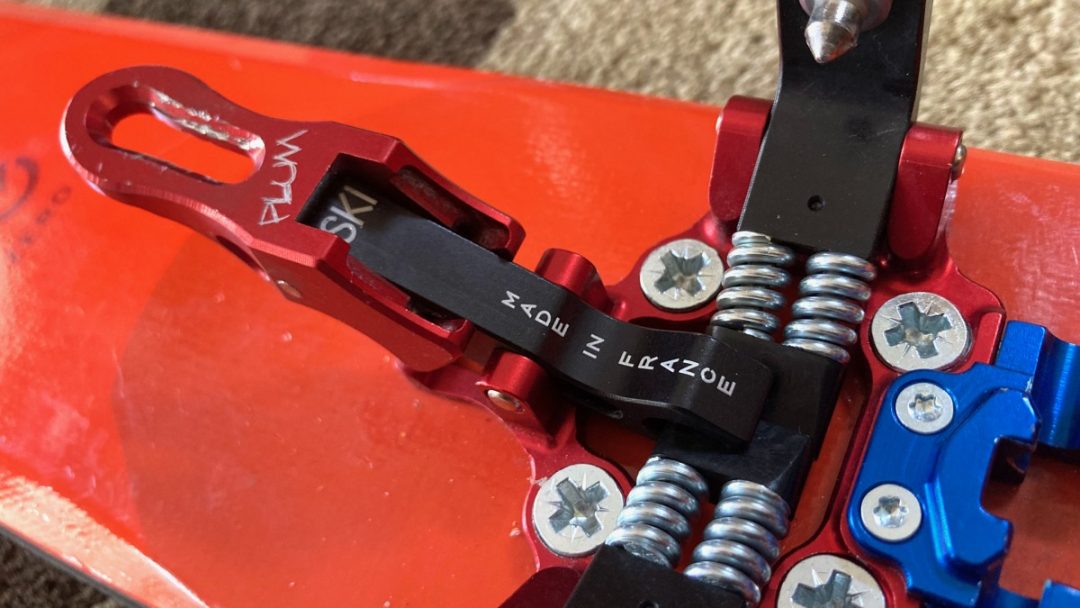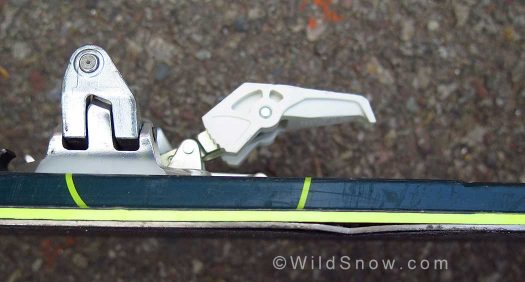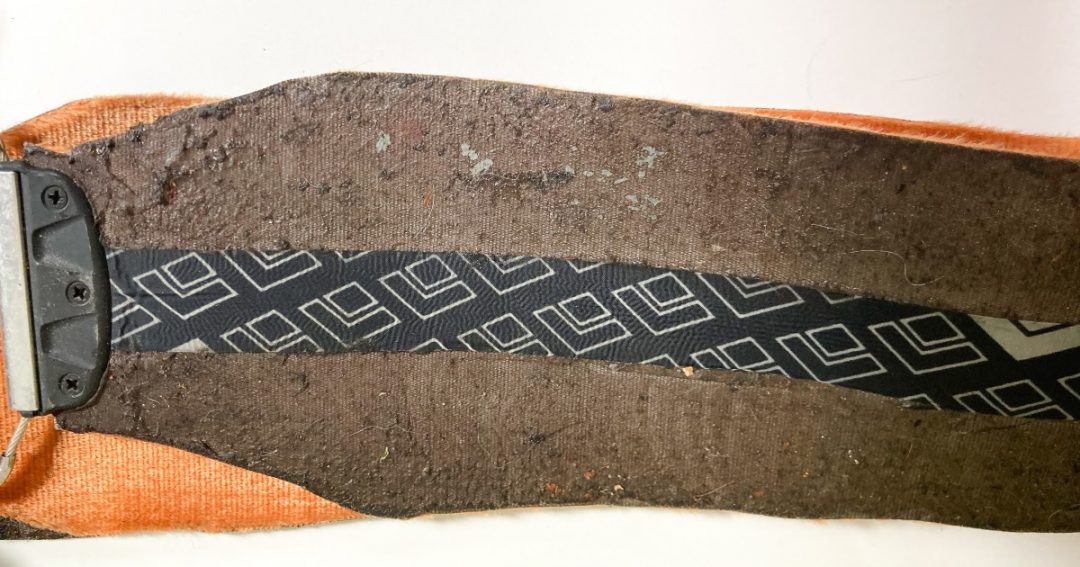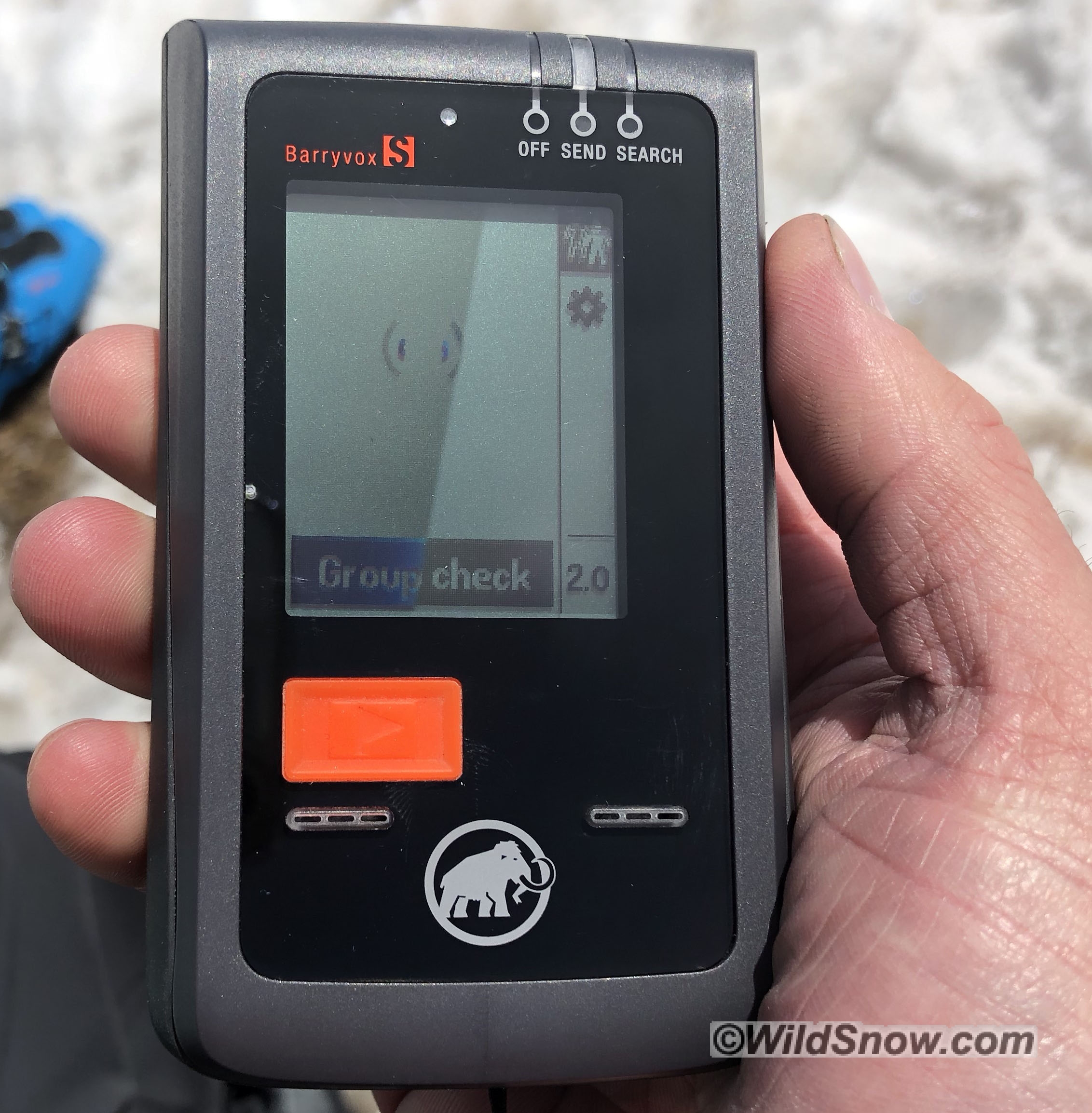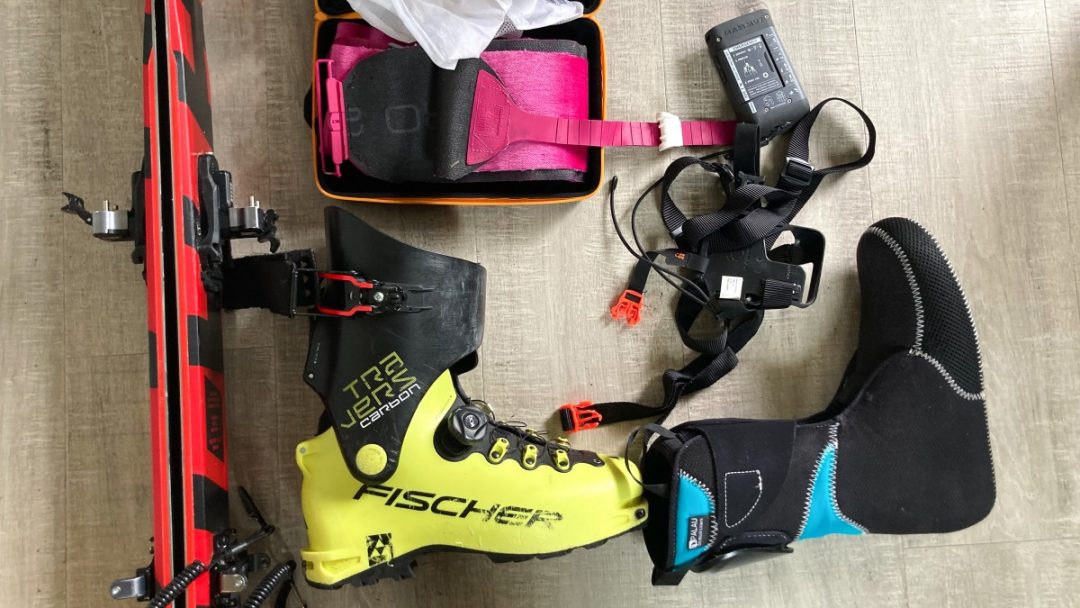Pre-season is not mid-season: Now is the time to thoroughly check your gear to ensure your backcountry skiing dreams aren’t kneecapped by faulty gear. Here’s a pre-season checklist to help guide you on this important task.
Now — not in the middle of a hut trip in February — is a great time to give your gear the TLC needed to help it perform flawlessly through another season. In this post, we revamp our classic pre-season gear check with feedback from readers and a WildSnow Pre-season Gear Checklist you can even print and gorilla glue to your garage ski bench. Don’t let this be the season when you’re That Skier whose binding screws just happened to worm out of their sockets while you were charging up that next lap deep in the backcountry.
“I was just skiing along and. . .” disaster. A morning full of excitement of the much anticipated earning of turns is thwarted by a faulty piece of equipment that leaves you cursing at the trailhead or sends you home early.
Ski touring gear is expensive, and much is built to be so minimalist and lightweight that we are asking for problems if we don’t treat it with some tender love and care. You wouldn’t drive a brand new car off the lot and expect it to perform flawlessly over the years without some oil changes, part replacement, and attention to detail. Hopefully, by paying attention to your gear and performing simple checks a few times a season, you can catch malfunctions before smoke billows from under the hood.
Throughout my years of ski shop work, I have seen hundreds of sudden failures on customers’ gear and even my own. The problems often seem to come out of nowhere when your gear looked shiny and eager to propel you up and down the mountains just the day before. But this stuff doesn’t come out of the universe’s great mysteries. Most often, there are warning signs. To that end, how about a checklist? (Please note, below is oriented to tech bindings, but the concepts apply to frame binding systems as well.)
Bindings
We ask a lot of ski bindings, particularly those with weights dipping under 200 grams yet still firmly hold you to your skis. Some of you rip along at speeds of up to 50 mph. Others charge in variable conditions. But, with minimalist binding builds, the margin for error in your gear is smaller than ever.
__Check all binding mounting screws. (This includes newly mounted bindings.) If the screws are loose, back them out, add wood glue or epoxy to the hole, and tighten back down. Loue notes that epoxy is better in this situation, but wood glue does work. In Lou’s opinion, cheap hardware store epoxy works best if you go the epoxy route. He says you don’t want it too strong and should be heat sensitive if you need to back screws out; the screws are less likely to break than if you use aerospace-grade epoxies.
__Make sure the binding is completely flat to ski, not “screw jacked.” This is a common problem and leads to all sorts of failures.
__Check for cracks, especially in the heel piece of binding, and examine the metallic toe plate (use a magnifying glass or 2x reading glasses).
__Check all machine screws for tightness. If a screw has backed out, add Loctite and tighten down. These screw heads can strip easily, so pay attention and go easy when retightening. If you’ve never done this and feel uncomfortable with it, seek the services of a professional binding technician.
__Click both boots into bindings and check heel spacing. Nothing is worse than arriving at the top of a ski line, beginning to transition, and realizing a friend was the last to use your gear in the spring.
Skis
Skis vary immensely in strength and durability. Yet common to all, the stress they endure is amazing — and breakage isn’t exactly rare. Catching an issue before skiing gives you a chance to repair or retire a ski before catastrophic failure.
__Examine skis for delaminations in the top sheet and sidewalls. If you find cracks, add epoxy and clamp with medium tightness before any moisture has a chance to permeate the core.
__Examine bases for dimples or core shots. Fill core shots with P-tex. If core shots are large (over a cm wide), you may want to visit a shop for a more serious repair.
__Check ski bases to determine the need for wax. If the base looks white or dry, it is time for wax. Backcountry skiers should avoid dry bases; a dry base is more likely to pull off skin glue. And a waxed base provides better glide.
Skins
Does the state of your climbing skins reflect your personality, or just how busy you are? If you can tell the color of your dog’s hair from looking at your skins, or they’ve been cursed so much that they seem to curl up on their own, it’s time to treat them differently.
__Check skin glue for balling and general stickiness. Adding a little glue can help you scrape through a season and prevent you from wallowing in the backcountry. You can also lay parchment paper over the glue and apply relatively high temps with an iron to smooth the glue out. Other options for the truly neglected or ancient skins are to send them out for cleaning and re-gluing or invest in a heat gun and a tube of skin glue to begin a clean and re-glue DIY project.
__Check tip and tail skin attachments. Make sure all parts and pieces are there and in good condition. Watch for little tears in the skin fabric around attachments that could start growing.
__Organize skins. If you use multiple setups and find yourself pawing through a pile of skins in the morning before a trip, perhaps it’s time to figure out a storage system. A simple approach is to have a dedicated bag for each set of skins, with the ski designation written on it.
Poles
Often the most low-tech part of the kit, ski poles help maintain balance while skiing. Most often, ski poles are constructed from aluminum or carbon fiber. Some skiers prefer a fixed-length shaft, others an adjustable two or three-segment shaft. The segmented shafts have more moving parts, so keep an eye out for potential failure points.
__Check pole baskets to make sure they are firmly secure.
__Inspect shaft for cracks. If you use segmented aluminum shafts, ensure the segments can extend and retract smoothly and the lock mechanisms function correctly.
__If you’ve got pole straps that are hard to adjust or broken, now is the time for a swap.
Boots
Sometimes, ski boots just seem to charge along for years with nary a problem. But, be wary of underestimating the beat-down ski boots suffer in the backcountry. Especially when the boot is a key part of the binding due to tech fittings, attention to detail is vital for performance and safety. Tech fittings, which include the boot’s toe and heel inserts and the bindings toe and pins, require down to the millimeter tolerances. It’s best to inspect pre-season for any fit or insert shape abnormalities and get a second opinion from a trusted shop or partner.
__Check those machine screws again and add Loctite if needed. Check your buckles routinely; a loose buckle can become a missing buckle. (Bring extra Voile or Titan straps in the event it becomes a missing buckle.)
__Add a small coat of white lithium grease to the ski/walk mechanism to prevent it from sticking in one mode.
__Overly worn cuff pivot rivet: check by manipulating the cuff to see if there is excess play. You can find tips for rivet repair here. And don’t forget the Ultimate Cuff Pivot for your Dynafits. These are not the easiest DIY projects but can be done at home. Any reasonably active and reputable ski touring shop has probably installed a few.
__Check tech heel fitting to make sure it’s firmly fixed to boot. Tighten screws, remove and bed in J-B Weld if needed.
__Check boot function in several different new tech bindings, especially by doing a hand check of lateral release. If the boot behaves poorly in a variety of new bindings, it’s possible the tech fittings are worn.
Beacon
There are no shortcuts when it comes to personal protective equipment and backcountry skiing /riding. Your beacon needs maintenance also. WildSnow has a resource dedicated to pre-season beacon checks. Give it a thorough read if you are concerned about your beacon’s reliability. For starters and redundancy, here are some pre-season to-dos for your beacon.
__If you failed to remove your beacon batteries in the off-season, pull the old ones and inspect for any corrosion; this is serious business.
__Insert new batteries at the start of the season.
__If your beacon is out of warranty, consider purchasing a new beacon. Although this is not a hard and fast rule, many in the ski/riding community opt for a new beacon approximately every five seasons.
__If you need to send your beacon in for a software update (which is unlikely with Bluetooth compatibility etc.), or do this on your own, get the software update.
__Test to ensure the lock function works when the beacon is in both “Send” mode and “Receive.”
Miscellany
Of course, technical gear isn’t the only thing that needs TLC. Your soft goods probably could use some love too. Consider a DWR refresher wash on your ski jacket and ski pants and some mink oil or other leather proofing on your ski gloves. Has your down jacket been encased in a stuff sack all summer? Now’s a good time to air it out and toss it in the wash. Mend any worn fabric with a DIY sewing job or an item like Tenacious Tape.
Do your goggle lenses look like they’ve survived passage through a war zone? It could be time for an upgrade or a lens switch up. And if your helmet is more than five years old, shows obvious cracking, or has sustained some blows, it could be a good time to retire it.
Stay tuned in the coming weeks for a full pre-season beacon post and rundown of essential repair kit parts, both for humans and gear. And feel free to add your two cents in the comments below.
Doug Stenclik is an avid skimo racer and ski mountaineer who lives for sharing the amazing sports of ski touring and splitboarding. Since his first time on skins he was hooked and the obsession has taken him all over the United States and the world pursuing the human powered ski turn. He founded Cripple Creek Backcountry in 2012 and took over the Colorado Ski Mountaineering Race Cup in 2014 to spread knowledge and the love of the sport. In 2019 he took a step back from the ski shop and race promoter life to become a publishing partner with WildSnow.

